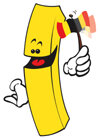.....I don't understand why the Dive Computer Training site won't allow you to purchase a class.
You CAN purchase the Puck class from our site.
There are 3 ways to enroll in our classes:
1) Purchasing the class with $
2) Using Bubble Credits
3) Using an Activation Code
See post on our forum:
[h=2]How do I enroll in - and pay for - an online class?[/h]







